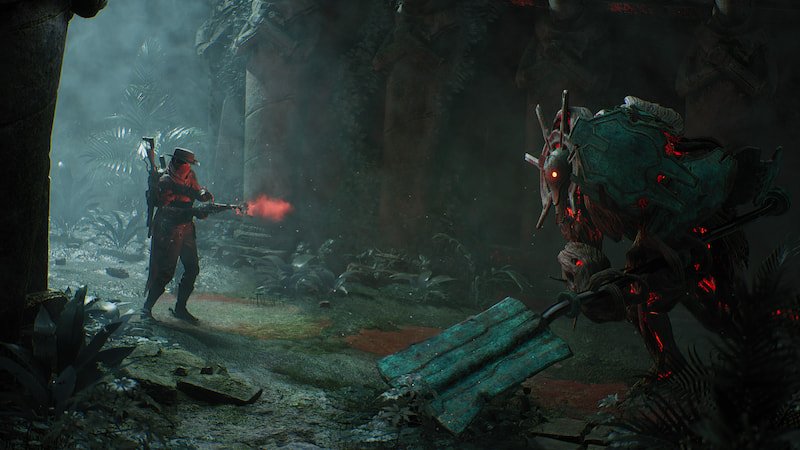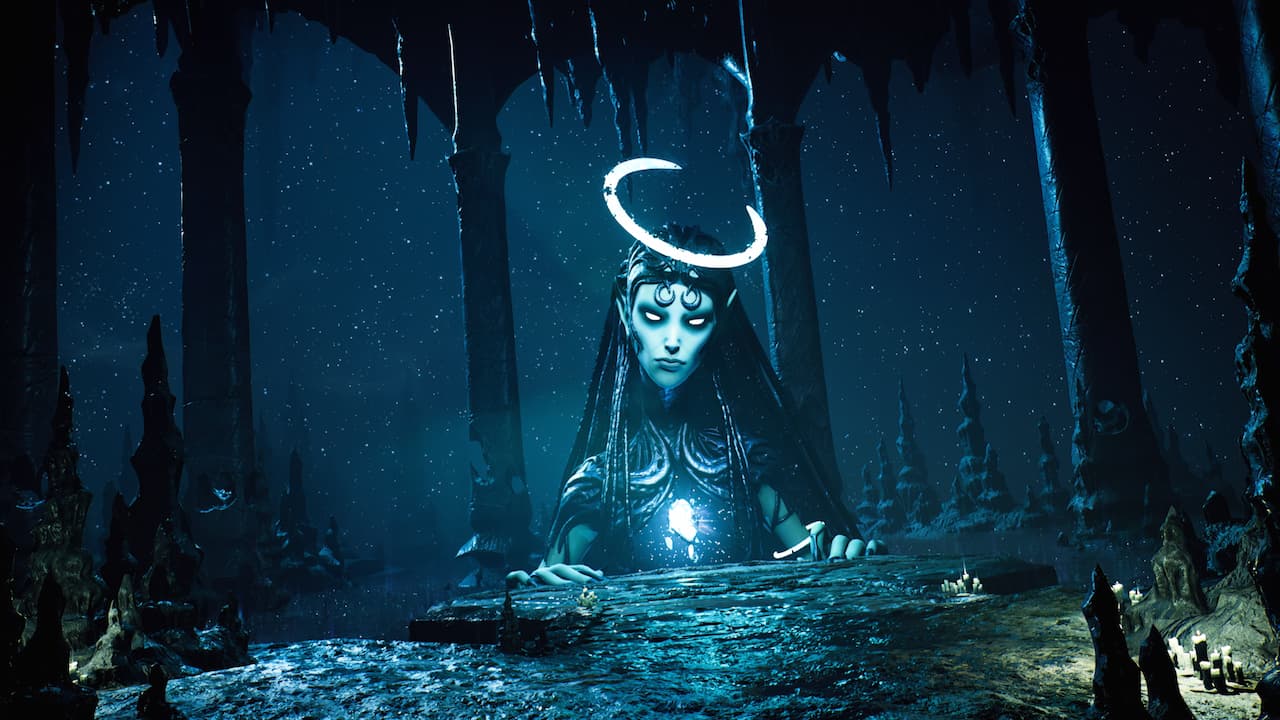Before the original Remnant was released, I spoke about how nobody knew how to describe the game really. Dark Souls, Destiny, Division, every cliche comparison was thrown out willy-nilly to explain what Gunfire Games’ third-person shooter was inspired by. With Remnant 2, this is a different story. After the original game came out of nowhere to garner a fanbase and establish its own identity, the sequel then had something the original never had—expectations. Remnant surprised gamers with its excellent feel, deep and interesting story, and randomly generated campaigns. During my Remnant 2 review period, my biggest question was, “Could they really pull that off a second time in a row? Why yes; yes, they can.”
Remnant 2 Review: Surprise Versus Expectation

Surprise, that was the original game’s biggest selling point, and a sequel doesn’t benefit from that. Without the element of surprise and with the weight of expectation, Remnant 2 does what so many new IPs rarely pull off these days; it surpasses those expectations. It is a sequel worthy of its predecessor, firmly establishing Remnant 2 as a game that doesn’t need to be compared to anybody else. It’s doing its own thing.
Story: The Root Takes Hold

When I began my Remnant 2 review, I didn’t know what to expect regarding the story. The first game wasn’t Souls-like in any regard. It wasn’t nebulous, sparse, or brief with its world-building. It had a deep and fascinating lore—a mysterious force known as the Root, which took hold of Earth and laid waste to it. The player is tasked with chasing down a man named Ford, the founder of a hub of survivors in a settlement called Ward 13.
You soon encounter a mysterious portal that takes you to a tower called the Labrinth; everything from that moment changes everything. What initially seems like a typical post-apocalyptic setting fades and makes way for something far more intriguing. The plot goes from Cthulu-inspired worlds and imagery to something high-tech and sci-fi akin to Stargate. Portals will take you to different worlds that all have one thing in common, the Root.
Knowing the setup for the story in the original is essential because Remnant 2 is very much a sequel to that game. Not just in terms of mechanics and themes but the plot. It takes place after the events of the original, with Ford still in charge of a much larger Ward 13. With the Root gone from Earth, Worldstones have laid dormant. You create a new character and end up at Ward 13 after encountering familiar faces, including a powerful ally, Clementine.
After a brief prologue, you will end up at the Ward, just in time for Ford and Clementine to get sucked into a Worldstone. Of course, as you’ve only known these people for about 10 minutes, your character nonetheless decides to jump into danger head first by using the Worldstone to try to find and save them. At first, the plot seems like a razor-thin excuse to begin adventuring around different worlds with a new character who has to go through the leveling process, which it is. The story quickly and thankfully develops into more than that.
Each world you explore isn’t just a biome with different weapons and armor to collect and bosses to fight, although it has plenty of that. The story and lore in each world are where the best story bits can be found. I was surprised by how much of a follow-up to the original that Remnant 2 became. As I mentioned earlier, each world has one thing in common: the Root. Most worlds have also encountered Ford and the previous games’ protagonists. These worlds contain deep, self-contained storylines that are interesting and full of unique cultures, species, and history, and they are all well told. Characters usually feature extensive dialogue options, which let you dig in as little or as much as you want.
These stories are the best lore bits of Remnant 2. Each world you visit is always an opportunity to meet and see something new. The main story thread is perfectly serviceable, and your fully-voiced character adds a lot to the plot. Still, the A plot isn’t nearly as interesting as all of the small stories you will experience in each new world you visit and traverse.
Gameplay: Jack of All Trades

As I mentioned previously during this Remnant 2 review, this game is a sequel in every sense. Think of games like Mass Effect 2, Assassins Creed 2, and Halo 2, titles that excelled at maintaining the core of what made the original great but then took those features to the next level. Remnant 2 does that and then adds some new ideas into the formula to shake things up.
First and foremost, if you’ve played Remnant before, rest well, veterans. Remnant 2 only enhances that game’s best features. The excellent shooting, superb net code, and randomized biomes from the original are all here and better playing and looking than ever. Even fan-favorite abilities and guns return, and they all perform as expected. For those who haven’t played Remnant before, I will try my best to get you up to speed.
Forget anything you may have heard about Destiny, Souls, or any other quick and easy comparison. Remnant 2 is very much its own game. It’s a PVE third-person shooter that can be played solo or with up to two other players. You have access to a primary and secondary gun and a melee weapon. Each weapon can also equip a weapon Mod, which acts as a secondary fire for the respective gun it’s equipped on.
Remnant 2 is an action RPG, and the RPG part concerns character management, skills, and Traits. Remnant 2 features an Archetype system, acting like your ‘class’ types. These classes all grant you a Prime Trait and a unique set of skills and perks to unlock as you level them from one to ten. The actual unique hook to Remnant is the Trait system. Traits are a vast array of passive effects that can be leveled up every time you earn a Trait point. These points can be found as items in the world or from leveling up your Archetype.
The best part of Traits is how you earn them. Instead of a limited skill tree, these are found via gameplay. Do you keep having to revive a friend who can’t stay alive? You might develop a Trait. Do you keep getting poisoned over and over again? You might develop a new Trait from that. The Trait mechanic is an excellent system because you’re never quite sure where the next Trait will come from. It encourages playing the game rather than staring at a massive tree with a calculator to make sure you don’t make or break your build.
Combining all these elements gives you the core of what makes Remnant 2 feel so good to play. Enemies are formidable, but they react well to getting shot and attacked. Elements from fighting games, undoubtedly influenced by Principal Designer Ben Cureton’s love of the genre, permeate multiple aspects of the game’s core design. Fighting game concepts such as Grey Health and small things such as great hit-stop animations combine to create a snappy, tight-controlling action experience. The feel of the action is about as far from the methodical pace of a traditional Souls that you can get while avoiding the reliance on bullet sponge enemies that are boring to fight against.
Graphics & Audio: A Whole New World

The original Remnant was a decent-looking game. What it didn’t have in technical wizardry, it made up for in its art style and the sheer variety of worlds, armor, and enemies you would encounter. Remnant 2 is a big step up in visual fidelity, and worlds like N’Erud and Losomn are exemplary examples of technology and art style coming together to create something memorable and visually striking.
During my Remnant 2 review time, consistency was one aspect of the audio and visual presentation that impressed me. Even though it’s a game where you might be in a post-apocalyptic Earth one minute, you will warp to a high-tech, futuristic Alien ship that discovered the center of the universe and then wrap up your adventure in an 18th-century London that resembles Bloodborne. Despite the wild swing of environments and styles, the game never clashes with itself.
This is part of Gunfire Games’ excellent art design, as they make all these elements fit with consistent visual language. I’m dressed as an alien spaceman with a two-handed sword, a laser gun, and a Western revolver. Despite this, I never feel like a Fortnite character wearing a bunch of cross-over skins from universes that don’t mesh together.
The audio is right there with the visuals. Remnants’ now memorable title theme once again greets new and returning players. It delivers a consistent undertone of dark melodies that will change in each world but offer a congruous sound. It rises and falls with combat appropriately, and the hub music is relaxed and inviting and provides a sonic safe spot when you aren’t ducking, diving, and running for your life in combat.
Conclusion: A Remnant-like

At the end of my Remnant 2 review period, I had to sit and think about any issues I had with it. I did have some technical issues in co-op play, and I had a pair of crashes when fighting big bosses, which takes the wind out of the sails. However, to be frank, it only happened in a single co-op session, and those were my only crashes in 45 plus hours. The previous Remnant suffered from frequent crashing, so I thought I would bring it up, but it didn’t kill or hampen the experience. This is without drivers or a day one patch as well, and the rest of the game performed very well, so fingers crossed that this was an isolated incident, but it’s still worth mentioning.
Regarding the game, I’m hard-pressed to find any real issues I had. It is such a smart sequel, and you can tell the developers must have poured over the game with a fine tooth comb, looked at their game critically, and then adjusted any rough edges. It’s more accessible than the first game and has multiple difficulty levels that allow you to gradually move to the more challenging content. The Archetype system helps players find an identity while the Trait system grants low-stress build ideas and room to experiment. Even the co-op is once again at the top of its class. Items picked up by any one player are given to the entire group, which helps if you want to split up and cover ground efficiently.
Last but certainly not least, I didn’t speak much on the game’s infamous use of Procedural Generation to create unique versions of each biome in your campaign. In the first Remnant, this was marketed as the “gimmick,” if you will, the thing that made Remnant something special. It’s back and even better than before, as it can give you different storylines per biome on a particular run. It helps create a unique experience, even after playing through a world for its 4th or 5th time.
Related: Is Remnant 2 on Game Pass?
I didn’t cover the randomly generated campaigns in this Remnant 2 review, but I honestly think this game doesn’t need it. The procedural elements were a surprise in the original, much like the game was. A hit that came out of nowhere, so to speak, and made a name for itself. Remnant 2 passes the true test of every great sequel, surpassing even my most optimistic expectations to double down on its own identity as a fantastic and wholly unique action RPG.
[review]





